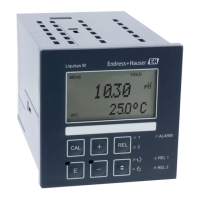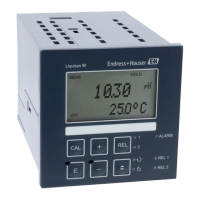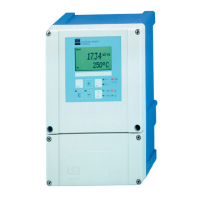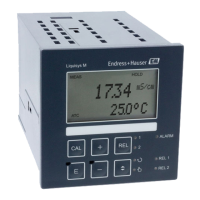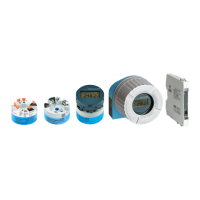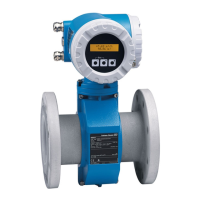A0025150-EN
If ←R is selected, you return to F. If
Next is selected, you go to F5.
7.4.6 Check
The CHECK function group is only available for devices with the Plus Package (ES and EP
versions).
In the CHECK function group, you can select different monitoring functions for the
measurement.
By default all monitoring functions are switched off. The Sensor Check System is adapted
to the current application conditions by adding and setting the suitable functions.
Alarm threshold monitoring
When you perform chlorine or chlorine dioxide measurements without chemical dosage
control, sensor errors lead to a measured value error, but have no impact on the process
medium (examples: monitoring measurements in water works). Sensor errors generally
cause implausibly high or low readings. This is detected and signaled by user-definable
alarm thresholds.
Controller monitoring
When you perform chlorine or chlorine dioxide measurements with simultaneous chemical
dosage control, sensor errors not only result in incorrect measured values but also directly
impact the state of the process medium.
Particularly in the case of regulated water disinfection, due to the closed control loop there
is the risk that chemical dosing will not switch on if the measured value is constantly too
high. This poses a considerable danger to process stability, and could even pose a serious
health hazard for humans. On the other hand, if the measured value is constantly too low
this results in higher operating costs and a risk of corrosion due to the continuous dosing
of chemicals.
These cases are detected and signaled using user-definable monitoring times for
maximum permitted limit value overshoot and undershoot.
Sensor activity monitoring
The effect of the process medium on the sensor can also result in incorrect measured
values. For example, severe deposit buildup on the sensor membrane can cause the
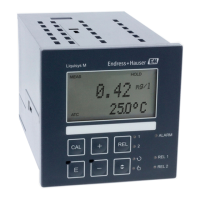
